Tubeless systems have been around a few years for mountain bikes with obvious benefits. Without inner tubes, there is no need to worry about dreaded pinch flats which occur when the tube is pinched between the ground and the rim. And, without worrying about pinch flats, you can run much lower tire pressure which means better traction. Not to mention, if you do get a thorn in your tire or a small tear from an encounter with a rock, the sealant inside your tire can save you from getting a flat.
Now that tubeless has entered the world of road cycling, what are the benefits?
So, what are you waiting for? Ready to go tubeless?
Learn more about Giant Tubeless Wheel Systems and additional helpful How-to Information here.
1.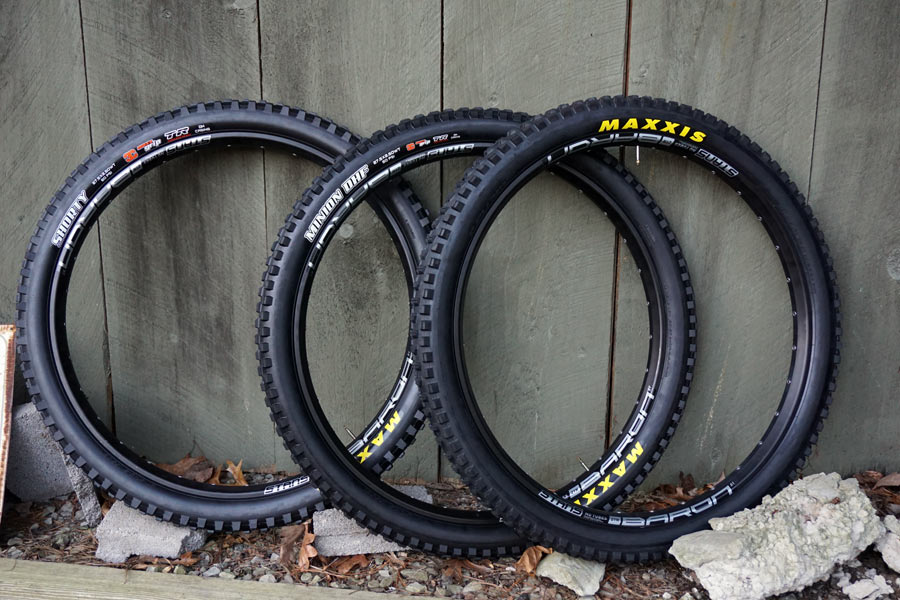 Ensure your tires and rims are tubeless-ready. Don’t worry, it should say so right on the label!
Ensure your tires and rims are tubeless-ready. Don’t worry, it should say so right on the label!
2. Remove your wheel from your bike.
3. Remove the tire and tubes from the rim. Check out our Fix-a-Flat guide for tips on removing your wheel, tires, and tubes.
4. If your rim is wrapped with a plastic rim strip that is not tubeless compatible, remove the rim strip.
5. Tape rim using tubeless-specific rim tape.

6. Using a metal pick or a small Phillip’s head screwdriver, poke a hole where the valve stem will be inserted. Be careful not to make this hole too big.
7. Insert tubeless valve stem into the valve hole and secure using plastic O-ring and washer provided.
8. Put the tire on the rim. If the tire is directional, make sure it is on correctly. Get more tips on how to change a tire by checking out our Fix-A-Flat Guide.
9. Insert recommended amount of tubeless sealant into the tire.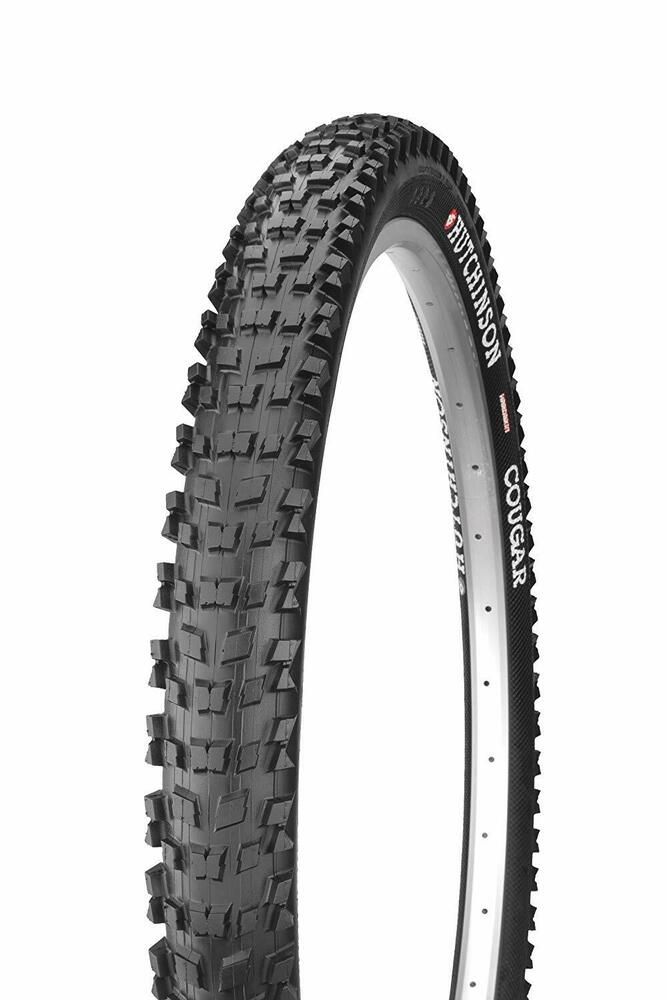 There are two different ways of doing this:
There are two different ways of doing this:
10. After the tire is mounted completely onto the rim with sealant inside, roll the tire on the ground to disperse the sealant. Pull the bead of the tire to the edge of the rim, if possible.
11. Inflate the tire! The best way to get the tire to seal is to add air as quickly as possible. That is why using an air compressor is the best method. If you do not have access to an air compressor, use a charger pump, like the Giant Control Tank Tubeless Inflator.
PRO TIP: Are you using an air compressor or tubeless inflator system and still having trouble getting your tire to inflate? Try removing the valve core on your tubeless valve. This will allow air to enter your tire even faster than it would through the valve. Just be careful once you remove the inflator nozzle from the valve since all the air will rush back out of the tire! Be ready with your finger to hold the air in and quickly replace the valve core with your tool.
12. After the tire is inflated and the bead is seated, bounce the tire on the ground. This will help disperse the sealant inside of the tire.
13. Replace your wheel and take your bike for a spin. Riding your bike right after setting the tires up tubeless will ensure a good seal.
14. You did it!
*If your tires are already set up tubeless and you are just changing to new tires, disregard steps 5-7. Remove any old sealant with an absorbent cloth and check your rim tape for damage before putting the new tire on.
*Over time, the sealant inside your tires will dry up and stop protecting you from pesky flats. Hot/ dry climates will cause the sealant to dry up faster. Check your sealant levels by shaking the wheel while it is off the bike. You should be able to hear the sealant sloshing around inside. If you can’t hear anything, you need to add more sealant! Otherwise, check your levels/ top off your sealant every 30 days.
Photos by Micah Stenson
Converting your wheels to tubeless can be intimidating but the advantages are many. You’ll end up with a better feeling, lighter and more supple tire that is more resistant to punctures. My 6 year old recently asked if we could convert the tires on his Specialized Riprock to tubeless. I said we’d give it a shot. Here’s the process that we followed:
You’ll end up with a better feeling, lighter and more supple tire that is more resistant to punctures. My 6 year old recently asked if we could convert the tires on his Specialized Riprock to tubeless. I said we’d give it a shot. Here’s the process that we followed:
You’ll need a few items to get rolling with a tubeless conversion. Here’s a parts list of what you’ll need.
Stans Sealant Injector
Stans Sealant
Park Tool Valve Core Remover
Pedros Tire Lever
Gorilla Tape
Revmega Tubeless Presta Valve Stem
1. Remove Wheels From The Bike
It may sound obvious but removing the wheels from the bike is mandatory for this operation since we will be removing the existing tubes and rim strips.
First deflate the tubes and then removed tires from the rims. A good pair of tire levers, such as Pedro’s tire levers may come in handy here.
Your Gorilla Tape may or may not come in the right width for your particular wheel. What we need to accomplish with the Gorilla Tape is to cover all of the holes that are in the rim from where the spokes attach to the rim. I needed to cut my Gorilla Tape down which was accomplished with a razor blade. I found this much easier to do before unrolling the tape.
After the tape is cut we can carefully apply it to the rim, smoothing and pressing it down as we go. Some people recommend using 2 or 3 layers of tape. I used only one and everything worked just fine.
Once the rim tape is applied we can insert the valve stem. First, make a pilot hole for the valve stem with a screwdriver or awl. Be careful not to make this hole too large as we want the bottom of the valve to seal up well against the tape.
After the pilot hole is in place, you can remove the locking ring from the valve and insert the valve into the rim. Once you have the valve stem on you can tighten down the locking ring onto the valve. You will want this locking ring to be tighter that what you would do for a tube because the locking ring is the only thing holding the valve in position. I used a pair of pliers to ensure it was good and snug.
Once you have the valve stem on you can tighten down the locking ring onto the valve. You will want this locking ring to be tighter that what you would do for a tube because the locking ring is the only thing holding the valve in position. I used a pair of pliers to ensure it was good and snug.
At this point you can go ahead and reinstall the tire on the rim. Once you have the tire mainly seated on the rim, go ahead and use an air compressor to air up the tire and get the tire beads to seat before adding any sealant. You’ll most likely hear a distinctive “pop” as the bead seats. We use an air compressor for this step as it allows a greater volume of air to be added to the tire quickly in order to get the bead to seat properly. At this point you can also check for any major leaks. The tire will most likely have some leaks but at long as it holds a bit of air you can proceed to the next step.
Now comes the fun part. I’ve seen a lot of demonstrations of tubeless conversions that involve trying to pour sealant into the tire with one bead broken off the rim. I don’t understand why anyone would do this. Instead we’ll use our handy Park Tool valve core remover to quickly remove the valve core. You’ll want to deflate the tire before doing this if it is still holding pressure. The valve core remover is super easy to use. It is specially designed to engage with the top of the valve and allows you to easily unscrew the core.
I don’t understand why anyone would do this. Instead we’ll use our handy Park Tool valve core remover to quickly remove the valve core. You’ll want to deflate the tire before doing this if it is still holding pressure. The valve core remover is super easy to use. It is specially designed to engage with the top of the valve and allows you to easily unscrew the core.
Once the core is removed, you’ll be left with the empty body of the valve with a hollow middle. You can then grab your syringe and screw the filler tube onto the valve body. After the syringe is attached fill it with sealant to the desired amount and use the plunger to force the sealant in. The amount needed will vary based on the size of your tires and the porousness of their material. For these 20in wheels, I used 1oz of sealant per wheel.
Once the sealant is in, put the valve core back in and rotate the tire to start to move the sealant around inside of the tire.
Then, air up the tire once again and start shaking that tire.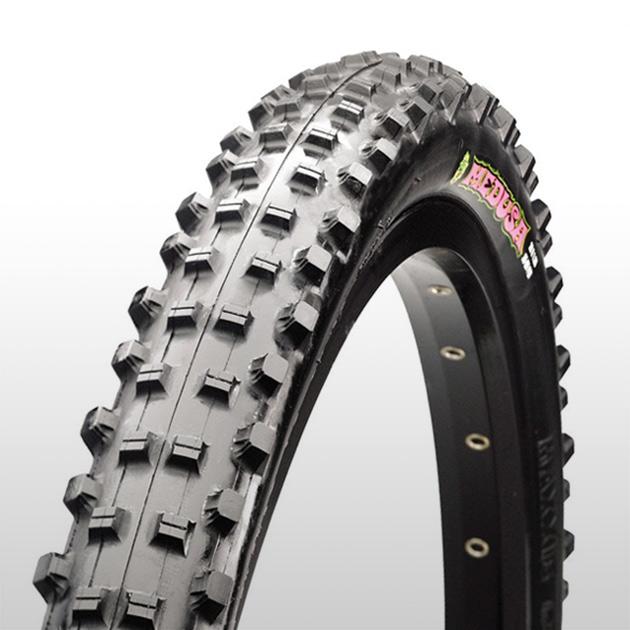 This will distribute the sealant in the tire and ensure a good seal.
This will distribute the sealant in the tire and ensure a good seal.
Reinstall the wheels on your bike and you are ready to rock and roll. I always carry one spare tube with me when I’m running tubeless so if I do have a catastrophic failure I can put a tube in and be on my way. Luckily after completing this process, you’ll have two spare tubes ready to serve as backups!
Tubeless tires can hardly be called the know-how of the bicycle industry, however, they still raise questions for many. The topic itself, as a rule, is surrounded by a lot of skepticism and distrust, which are more often explained by a lack of understanding of basic things and a lack of experience in riding such wheels. To dispel all these doubts, we answer the main questions related to tubeless technologies.
These are bicycle tires that do not have a tube. At the same time, tubeless technology is not only about tires.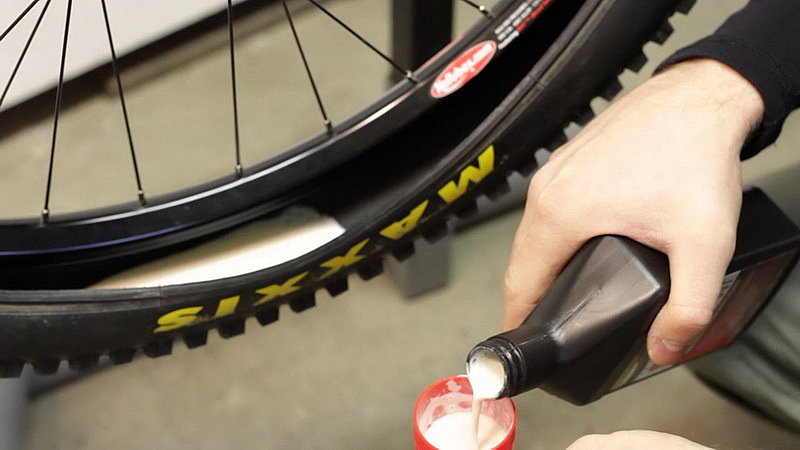 We are talking about a whole wheel system, which also includes a special rim and a sealant that gives the wheel anti-puncture properties. The tubeless concept makes the bike more comfortable to use and improves its riding performance, which will be discussed in order.
We are talking about a whole wheel system, which also includes a special rim and a sealant that gives the wheel anti-puncture properties. The tubeless concept makes the bike more comfortable to use and improves its riding performance, which will be discussed in order.
How long ago did this technology appear and can it be trusted?
Those who hear about bicycle tubeless for the first time usually tend to be suspicious of them. You can dislike this technology for subjective reasons, but you definitely shouldn’t distrust it. Tubeless tubes have been massively used for cars and motorcycles for several decades, and during this time they have not given reason to doubt their reliability.
The first tubeless systems for bicycles appeared in 1999, when the French rim brand MAVIC, in collaboration with tire manufacturer Hutchinson, presented their concept of a simple and effective tubeless wheel. In the 2000s, this technology remained the prerogative of mainly professional athletes, who quickly appreciated its main advantages: lighter weight, more air in the wheel, good "traction" and durability.
In recent years, tubeless has finally ceased to be perceived as something exotic. For example, today a significant part of the MTB and almost all touring cars come with such wheels as standard. A wide variety of sealants are also available on the market, and the number of those who are discovering the benefits of tubeless technology is steadily increasing.
The tubeless system provides a special rim and tires that are labeled tubeless ready or TR. However, the rims themselves are easy to distinguish visually - they have a low side and characteristic walls with recesses, forming a kind of lock in which the tire cord is wedged when air is injected. Due to this, in the inflated state, the rubber reliably and hermetically “sits” on the rim, without breaking off the wheel even at low pressure. The rim itself is additionally glued with a sealing tape, after which the nipples are installed separately.
The benefits of tubeless wheels are revealed no matter how often and what kind of bike you ride: whether it's weekend trips, extreme downhill or long-distance touring.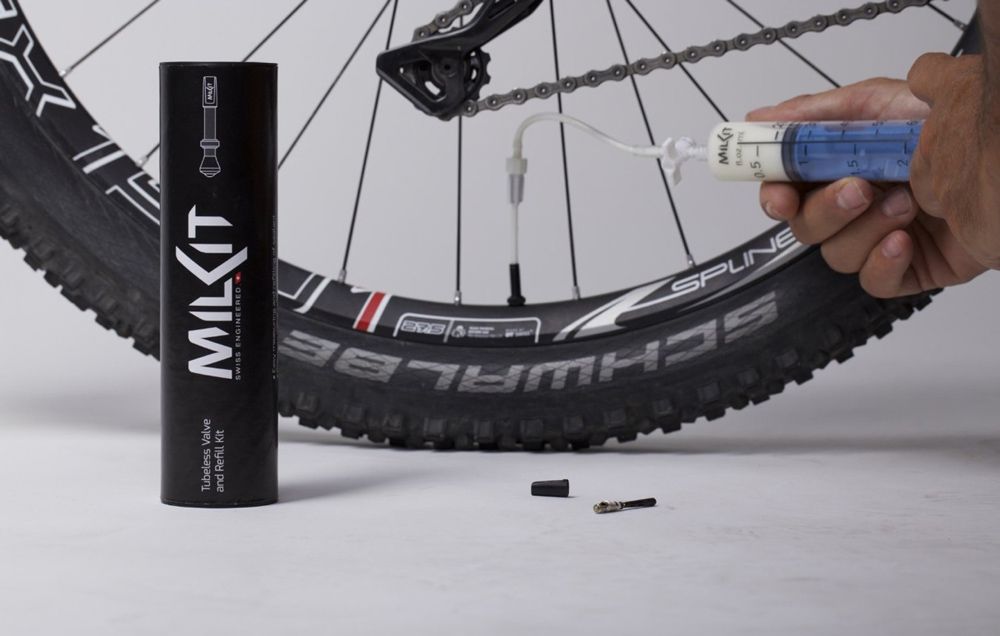 Nevertheless, for certain categories of cyclists tubeless still open up more opportunities: first of all, we are talking about those who are seriously passionate about off-road.
Nevertheless, for certain categories of cyclists tubeless still open up more opportunities: first of all, we are talking about those who are seriously passionate about off-road.
When actively driving off-road with tubeless tubes, you can ride on lowered wheels and at the same time not be afraid of such an unpleasant type of puncture as a snake bite. Low tire pressure, in turn, gives better handling, dampens vibrations more effectively and generally provides more comfort on difficult tracks. If we are talking about cyclists, then they appreciate tubeless for their anti-puncture qualities.
Road bikes also use tubeless wheels. Moreover, they are the pioneers of this technology. But road tubeless tubes are a different story: they are designed for different operating pressures and have tangible design differences. Therefore, further we will talk mainly about those tires that are put on mountain, touring and city bikes.
These are the two rim formats that define the features of a tubeless wheel assembly.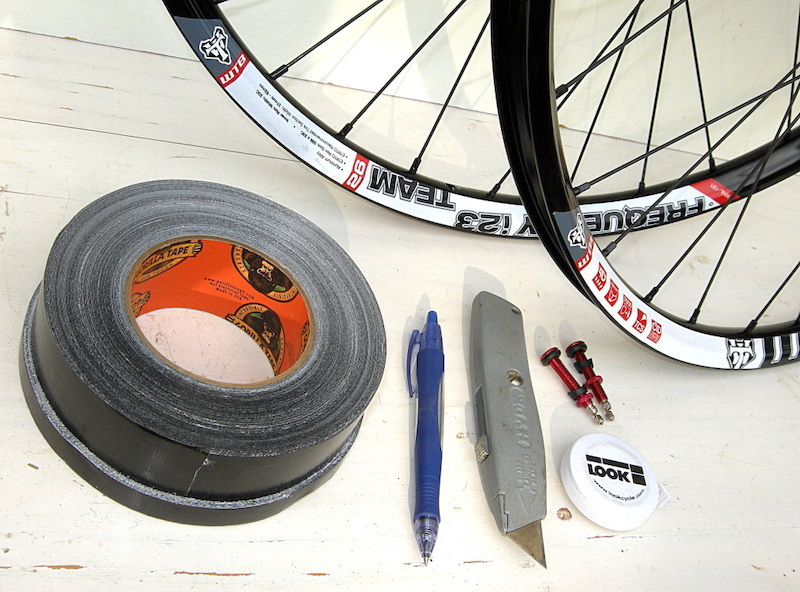 BST is a standard that involves the installation of a special sealing tape that prevents air from leaking through the holes in the spokes. This is the most common version of tubeless systems.
BST is a standard that involves the installation of a special sealing tape that prevents air from leaking through the holes in the spokes. This is the most common version of tubeless systems.
UST is a blind rim in which an additional bridge isolates the spoke holes. Thus, there is no need for laying a sealing tape. In practice, this greatly simplifies life, because when installing a tire (especially without proper experience), the tape tends to crush, which is why you have to reassemble the wheel. It is easy to guess that such rims also have a drawback - their price.
The tubeless system in the form in which we wrote it above is already a full-fledged wheel, it can be installed on a bicycle and hit the road. But there is an important nuance. First of all, tubeless tubes are valued for their anti-puncture qualities: for this, a small amount of a special liquid, a sealant, is poured inside the tire.
Yes, you can. But you should not do this. Firstly, this is illogical: for no reason you are depriving yourself of the main advantage of tubeless - the anti-puncture effect. But more importantly, it is very difficult (or even impossible) to inflate such a tire in a completely flat state with a portable pump: to do this, you need either a strong floor pump or a booster. Naturally, no one will take such bulky things with them on the road. Filled with sealant 95% of punctures "seal" without a critical loss of pressure, and in most cases there is no need for even light pumping. Thus, the probability of being with a flat tire is very low.
But you should not do this. Firstly, this is illogical: for no reason you are depriving yourself of the main advantage of tubeless - the anti-puncture effect. But more importantly, it is very difficult (or even impossible) to inflate such a tire in a completely flat state with a portable pump: to do this, you need either a strong floor pump or a booster. Naturally, no one will take such bulky things with them on the road. Filled with sealant 95% of punctures "seal" without a critical loss of pressure, and in most cases there is no need for even light pumping. Thus, the probability of being with a flat tire is very low.
So, if you put tubeless, sealant is still needed. Such fluids are easy to find in any bike shop, they are inexpensive and require replacement on average once every three to four months, so there is no need to talk about any inconvenience. Yes, in order to cope with the fill, you need to acquire a certain skill, but this is much easier than constantly changing broken cameras.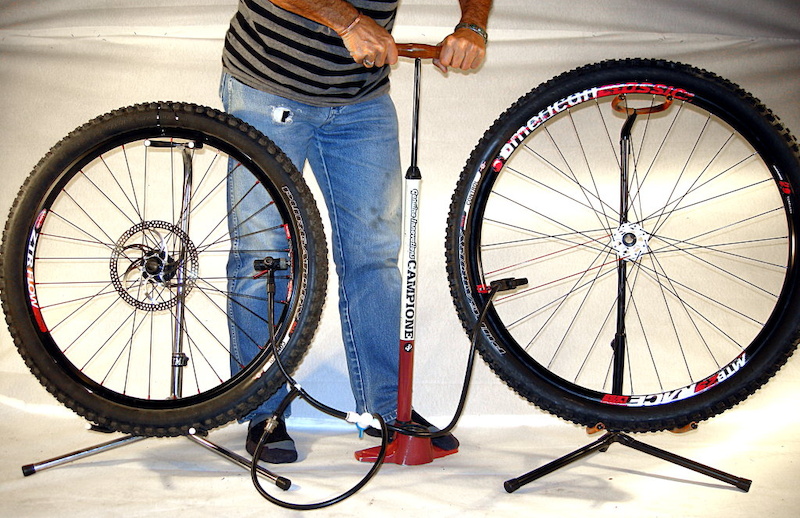 In addition, sealant can be replaced once a season in a specialized service.
In addition, sealant can be replaced once a season in a specialized service.
Bicycle sealants are based on fine particles (rubber or polymer fibers) suspended in a liquid carrier. Inside the wheel, the sealant does not polymerize: it is in a liquid state and is distributed along the inside of the tire during movement. When a puncture occurs, the air flow begins to push the solution out. A fine suspension clogs the hole, and the sealant dries quickly. Thus, there is a reliable "sealing" of the puncture.
If we talk about typical punctures - collisions with thorns, wires, small glasses - such damage is self-healing without a noticeable loss of pressure. Usually, a puncture can only be guessed from a small spot on the surface of the tire. Naturally, the sealant works with more complex damage. You can count on it even if you pierce the wheel with a thick nail, 4-5 mm in diameter. If you don't understand how a liquid can seal such holes, you can watch numerous crash tests on YouTube that demonstrate the miraculous properties of sealants.
The consumption per tire is from 50 to 100 ml. If we are talking about standard MTV tires, the golden mean is about 60 ml per wheel. The exact dosage will always be written on the bottle. It is difficult to get confused even for those who do not like to read instructions: most sealants have measuring containers or a dosage scale on the bottle itself.
Here, too, everything is conditional and depends on the characteristics of the specific composition and intensity of punctures. In the absence of serious damage that entails the leakage of a large volume of sealant, you can easily skate a whole season on one fill. Some cyclists prefer to do an incomplete start-up gas station and gradually add 20-30 ml of fluid every two to three months. You can also navigate by how effectively the sealant works: if you see that small punctures are sealed with a strong deflation of the wheel, it may be that the composition is no longer enough and it needs to be added.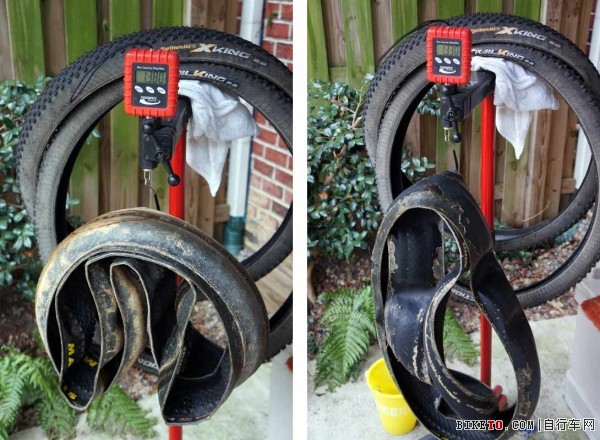 Be that as it may, sealant is a very economical thing that lasts for a long time.
Be that as it may, sealant is a very economical thing that lasts for a long time.
The sealant inside the tubeless tends to dry out, forming a characteristic film. Whether or not to clean the tire cavity is up to you. This is a purely aesthetic moment, which does not affect the operation of the anti-puncture fluid. The sealant can simply be added as it dries and not bother with unnecessary worries. It is more likely that the tire will completely wear out than it will have time to completely clog with dried filler.
Serious damage - large diameter punctures, small cuts, run over nails with subsequent tire rupture - are repaired using special repair worms. These are rubber or fibrous bands that are inserted into the hole to reduce its area and allow the sealant to seal the puncture.
With long longitudinal cuts it is more difficult. Here you need to either sew up the dissection with nylon threads, or stick a patch on the inside of the tire. You don’t have to worry about the tightness of the repair site - the sealant will do this work, of course, if it does not have time to leak out. But being able to inflate a completely flat tire with only a portable pump will require skill.
You don’t have to worry about the tightness of the repair site - the sealant will do this work, of course, if it does not have time to leak out. But being able to inflate a completely flat tire with only a portable pump will require skill.
In fairness, we note that such complex injuries are rare for most cyclists. But for those who are seriously passionate about off-road, it is better to play it safe with a spare camera. In this case, having caught a cut, you can always drain the sealant, unscrew the nipple from the rim and install a regular camera. And in order not to drive with a “hernia” protruding outward, we recommend placing, for example, a bill folded in half under the cut on the tire.
Tubeless allows you to forget about such an unpleasant form of damage as a "snake bite" forever. It usually happens when at full speed you catch a pothole in the pavement, unsuccessfully jump onto a curb or run into a stone on a downhill. Hitting the edge of a hard object, the tire is crushed, and the rim walls work like incisors, damaging the chamber in two places. In tubeless wheels, this scenario is excluded, because. there is nothing to break through here. Of course, it can be assumed that the rim will cut the tire itself, but this should be a blow of enormous force, which is almost never encountered in practice.
Hitting the edge of a hard object, the tire is crushed, and the rim walls work like incisors, damaging the chamber in two places. In tubeless wheels, this scenario is excluded, because. there is nothing to break through here. Of course, it can be assumed that the rim will cut the tire itself, but this should be a blow of enormous force, which is almost never encountered in practice.
Rejection of the chamber increases the volume of air in the wheel. This changes the contact patch (it becomes flatter) and allows the wheels to better absorb off-road bumps. Add here the ability to ride at low pressure, without being afraid of a snake bite, and it becomes completely clear why tubeless lovers of hard off-road riding so idolize. Soft tires with a large contact patch "fit" all the bumps in the road, giving excellent traction on rocks, forest primers and other off-road.
In addition to traction, tubeless tires improve shock absorption, dampen vibrations better, and generally provide more off-road comfort. At the same time, to get the most out of this rubber, you need to experiment a lot with tire pressure, trying to find the indicators that will best suit your individual riding style.
At the same time, to get the most out of this rubber, you need to experiment a lot with tire pressure, trying to find the indicators that will best suit your individual riding style.
Finally, the camera is extra grams. By refusing them, you can save an average of 70-100 g of weight on each wheel. For some, this may seem like a formality, but it is worth considering the fact that extra grams on the periphery of the wheel have a stronger effect on driving performance. This difference is especially felt on road bikes: road bikes, gravel, touring.
They also exist. Moreover, it is far from formal. First, it's the price. The difference becomes especially noticeable when you buy tubeless systems separately: rims, tires + small things (tape, removable nipples, sealant). For tubeless you will have to pay an average of one and a half times more than for ordinary wheels, plus or minus the same class. And if we are talking about more advanced UST rims, then this means another + 30-40% to the cost.
With tubeless by default, everything is more difficult in terms of installation (here we are talking about conventional BST systems). You need to learn how to properly glue the tape, accurately insert the nipples, carefully install tight rubber, making sure not to displace the tape and not fill everything with sealant. On the other hand, all this comes with experience, but what you will always have to put up with is the difficulty with pumping a completely flat tire.
A tubeless tube cannot be inflated until its landing board snaps into place on the rim. To do this, you need to sharply introduce air into the tire. The tire should straighten up and fall into the grooves with a characteristic click - then it can be safely pumped further. This all sounds simple if there is a compressor in the garage. Putting a tubeless tube into the grooves by pumping air with an ordinary floor pump is quite difficult, and almost impossible with a portable bicycle pump.
All this makes life much more difficult. But there are solutions. In the field, a compact can of compressed air can help out. At home, installing tubeless tubes greatly simplifies the booster. This is a cylinder into which a high pressure is pumped with a pump, then it is connected to a nipple, the valve is lowered - and the air from the reservoir pumps up the wheel sharply.
But there are solutions. In the field, a compact can of compressed air can help out. At home, installing tubeless tubes greatly simplifies the booster. This is a cylinder into which a high pressure is pumped with a pump, then it is connected to a nipple, the valve is lowered - and the air from the reservoir pumps up the wheel sharply.
As you can see, tubeless cameras also have enough disadvantages, but it is wrong to consider them in isolation from the advantages. For example, the probability of being with a completely flat tire away from home is very low, due to the anti-puncture qualities. Complicated installation is offset by the lack of punctures and roadside repairs. And by overpaying in price, you save on interchangeable cameras, and, of course, win as a roll on off-road.
Camera: To be or not to be?
Conventional tires use an inner tube filled with air, but how do tubeless tires work?
Most dedicated tubeless tires use the Michelin system and the Mavic Universal Tubeless System (UST): a thick sidewall tire that fits into a custom sealed UST rim.
The advantage of this system is an airtight seal with or without liquid sealant, as well as stability, pinch and puncture resistance and low pressure.
Disadvantages include higher price, complex installation requiring clean rim and tire to seal, and large volume pump for inflation.
Clean tires and onboard pumps are difficult to maintain in the field, and even with a carbon dioxide cartridge, you will most likely need to use an inner tube to get home and fix the tire later. While small punctures can be repaired, a large hole can render the tire unusable.
Tubeless kits, such as Stan's No Tubes, allow you to create your own tubeless wheel using a latex-based liquid compound and rubber rim tape to seal the inside of a conventional tire and rim.
In this case, you will receive most of the benefits that the UST system provides, i.e. puncture resistance and low pressure capability, but with an almost unlimited choice of rims and tires—you can use even the ones you have—at the cost of just the starter kit and latex fillers.
The resulting tires will be lighter than the UST system models. Although the problem of inconvenient tire replacement in the field remains relevant. These tires are also less stable than the UST models and may even come off under heavy cornering loads.
Bontrager has developed a compromise solution, the Tubeless Ready system, which uses a lighter but airtight UST tire with a bead cord that easily seals into a tubeless rim with Super Juice latex compound. These tires potentially combine the best of the two systems and look good so far, and are also cheaper than the UST.
Light or heavy
Don't forget the significant effect that weight has on a bike's dynamism and acceleration. Lightweight tires make it much easier to pick up speed, change direction and even stop, so they are great for use on cross-country bikes.
Heavier tires tend to be thicker, which means they are more resistant to punctures and snake bites, and are less likely to pop and bounce at low pressures. Heavier tires also increase the gyroscopic effect of the wheel, making the bike more stable on the ground or in the air.
Heavier tires also increase the gyroscopic effect of the wheel, making the bike more stable on the ground or in the air.
As far as really heavy tires go, DH tires with a reinforced carcass are designed to operate at ultra-low pressure (below 20 psi) without bursting or coming off the rim, and need gravity to propel their enormous weight. .
Size selection
The tire width range is quite wide, from 1.5 to 3 inches, but these tests were mainly carried out on trail bike tires 2.2 inches wide and larger and DH tires 2.5 inches wide and larger. The reason is that they provide good protection and traction for aggressive riding. Narrower tires provide less cushioning and a smaller footprint for traction. Resistance to snakebite punctures is lower if the pressure is not high. However, they are lighter and provide faster movement, and often move better through sticky mud and viscous environments.
Square profile tires have a larger footprint but roll more heavily in corners. Rounded tires lean easier in corners and provide a more predictable trajectory when sliding. Although the grip of the side surface with the road is not so aggressive.
Rounded tires lean easier in corners and provide a more predictable trajectory when sliding. Although the grip of the side surface with the road is not so aggressive.
Speed or traction
The claim that tires that provide good grip due to adhesive compounds and have high bulges with non-beveled edges provide more traction than others is somewhat simplistic but true. However, with this generalization, there are a few tires worth mentioning that provide faster speeds through a slightly rounded tread pattern, multiple tread compounds, or the use of a "strong" carcass. Conversely, some tires that barely have any tread provide the same amount of traction as mid-rise bulge tires.
Glossary

 Dual-compound tires are typically stiffer in the center or bottom for more speed and durability, but softer in the shoulder for cornering traction. Schwalbe and Maxxis are also currently producing 3-compound tires.
Dual-compound tires are typically stiffer in the center or bottom for more speed and durability, but softer in the shoulder for cornering traction. Schwalbe and Maxxis are also currently producing 3-compound tires. According to the materials of the portal CycleNews.ru
It's time to turn on spring and update your technical wardrobe. Surely your young lady has been dreaming of a beautiful bike for a long time or has already grown out of the previous one. It's time to make a choice and have time to buy a 24-inch bike with a favorable discount. Female teen models, of course, not much ...
We are often asked - ".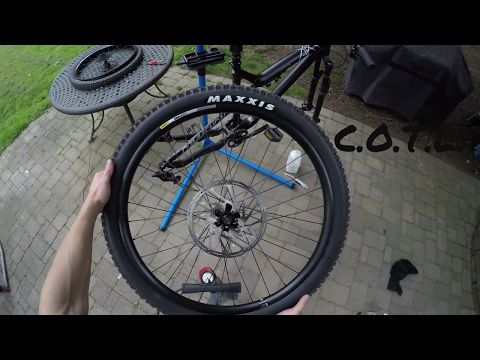 ..what is a butyl inner tube for a wheel?". Let's read this short article together to get the answer to this question. Let's start with the definition of what is butyl? Butyl is a highly elastic and airtight synthetic rubber, to which…
..what is a butyl inner tube for a wheel?". Let's read this short article together to get the answer to this question. Let's start with the definition of what is butyl? Butyl is a highly elastic and airtight synthetic rubber, to which…
Artem Gorev, a cycling specialist, dispels all myths. Most people who want to buy a bike are not particularly knowledgeable about the subject and have a natural desire to consult with someone before buying, and they: - turn to their friends for help, ...
Bicycle specialist Artem Gorev advises: Every time I sell a bike to a person who is at the very foot of the cycling Olympus, I give a short briefing, i.e. I list the most important, in my opinion, points that a novice cyclist should remember in ...
Valuable advice is given by bicycle safety specialist Artem Gorev. Oddly enough, but with age you begin to appreciate life more (at least, I noticed such a feature in myself), it would be nice to think about the reasons for this paradox, but I will restrain myself, the purpose of this article is somewhat different.…
Oddly enough, but with age you begin to appreciate life more (at least, I noticed such a feature in myself), it would be nice to think about the reasons for this paradox, but I will restrain myself, the purpose of this article is somewhat different.…
Artem Gorev, expert on safe cycling, tells. You bought a bike and hit the road for the first time. Of course, you are aware that this is not a safe business, but excellent knowledge (and observance) of the rules of the road relaxes you, an ugly inner voice whispers ...
Bicycle specialist Artem Gorev conducts research and gives advice. The other day I read an interesting article written by American professional rider Neil Bezdek called Finding the Right Cycling Coach. In addition to advice on choosing a coach, ...
The seasonal problem of all outdoor enthusiasts is what to do with the bike in winter.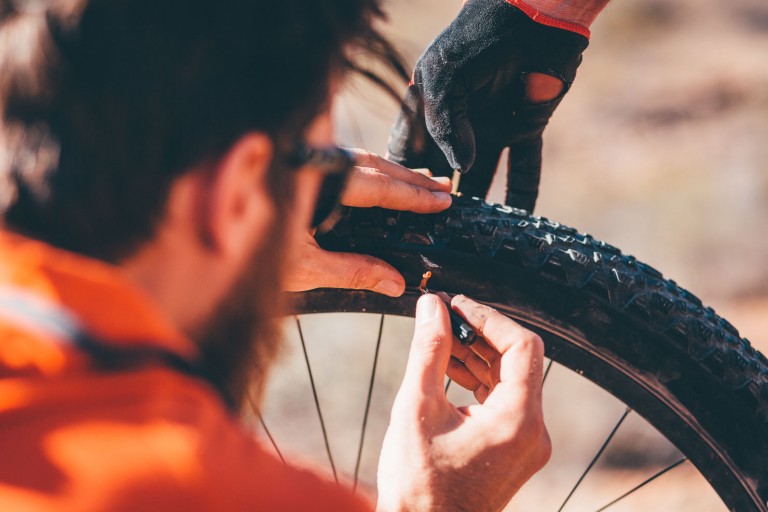 If you are not an extreme, ready to ride in snowdrifts, then for five months you need to attach an iron horse somewhere. In fact, the bicycle turns out to be a very fragile creature, and even if it withstands wintering ...
If you are not an extreme, ready to ride in snowdrifts, then for five months you need to attach an iron horse somewhere. In fact, the bicycle turns out to be a very fragile creature, and even if it withstands wintering ...
A city bike needs a professional service once a year, while a cross-country bike requires more frequent workshop visits. According to Kert Olle, head of technical products at Rattamaailm, home care of a bicycle starts right from the very…
Everyone loves to ride bicycles. Well, almost everything. And the head of the metropolitan traffic police, Dmitry Korzyuk, rides it, and the founder of the Internet portal TUT.BY, Yuri Zisser. But will cyclists be able to fix a two-wheeled vehicle if a wheel suddenly breaks on the road? Blogger Alexander Deshchenko decided to replenish ...
Go to page:
